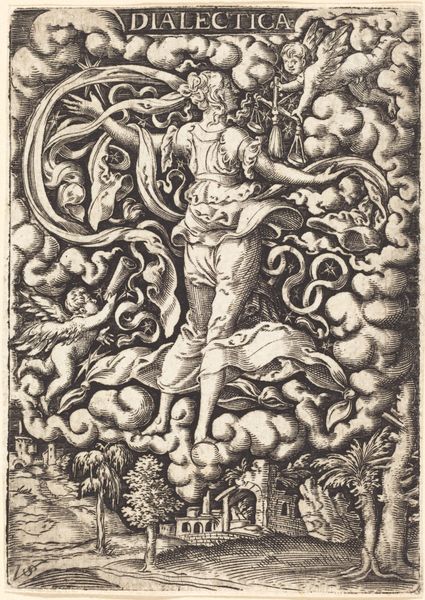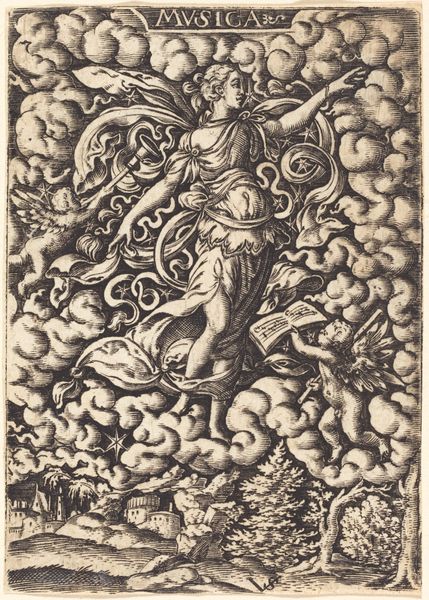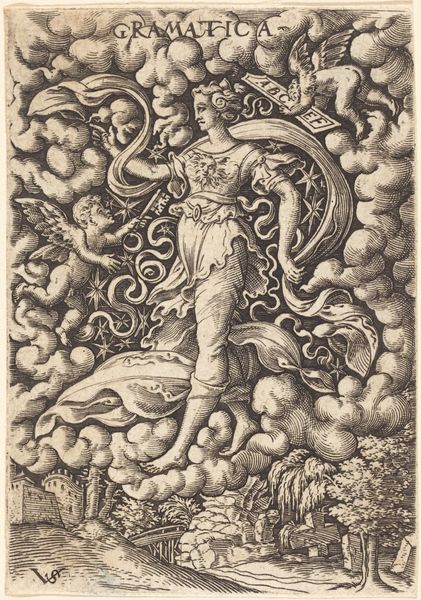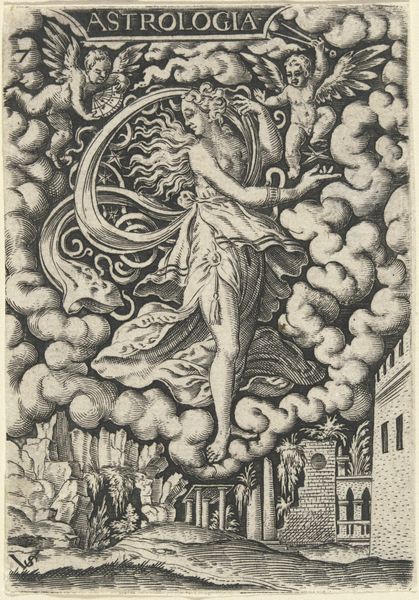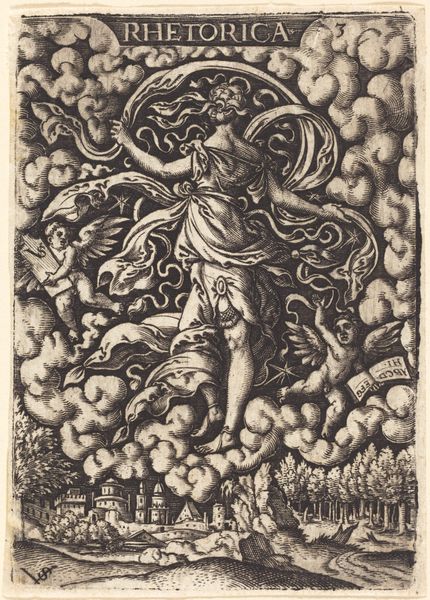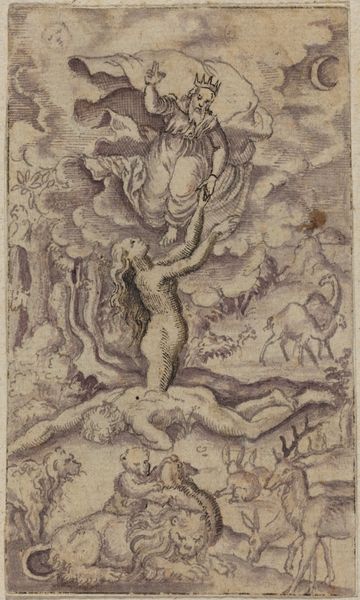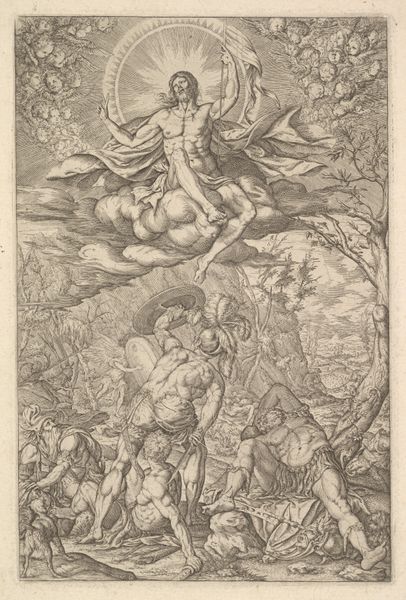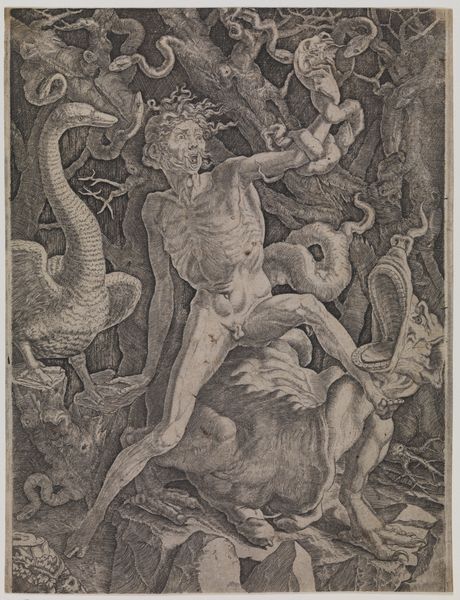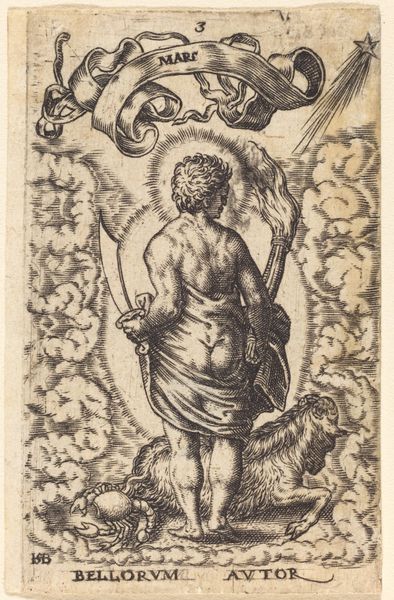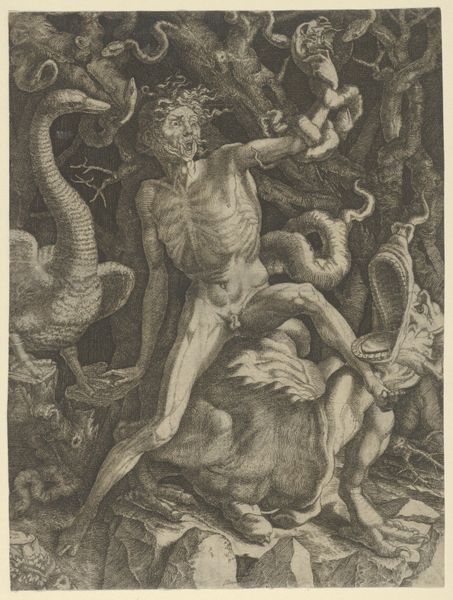
print, engraving
#
allegory
#
pen drawing
# print
#
classical-realism
#
figuration
#
pen-ink sketch
#
tattoo
#
line
#
pen work
#
tattoo art
#
engraving
Copyright: National Gallery of Art: CC0 1.0
Editor: Here we have "Geometria," a print by Virgil Solis. The intricate line work really captures my attention, creating this almost ethereal scene. How would you interpret this work? Curator: It’s crucial to consider this engraving not just for its representational qualities, but as a product of specific labor. Notice the fine lines. Engraving demands incredible skill, and therefore, time. Time equates to cost. Who was the audience for such detailed work? Was this affordable for many? Or did it signal a specific social status, maybe appealing to the rising merchant class seeking emblems of knowledge? Editor: That’s a really interesting point I hadn’t considered! So you're saying that the physical labor behind creating this engraving influenced its accessibility and potentially, its intended audience? Curator: Precisely. Consider, too, the availability of copper plates and engraving tools in Solis's time. The material dictates the possibilities of the medium itself. Were certain types of lines easier to create? Did that influence the aesthetic choices made? Think about the circulation of these prints as commodities; how they disseminated ideas related to geometry and knowledge. Editor: I see! So the material limitations and production methods actually shaped both the image itself and its impact on society. It’s about more than just the subject. Curator: Exactly. The subject becomes another piece of material evidence in our analysis, not the entirety of it. The 'allegory' becomes intertwined with the 'making.' What does looking at "Geometria" tell us about artistic labour, resource availability, and social aspiration in the period? Editor: I'll definitely be looking at art differently from now on! Thanks! Curator: Indeed, it moves us away from idealized notions and situates it within the tangible realities of production. Food for thought.
Comments
No comments
Be the first to comment and join the conversation on the ultimate creative platform.
